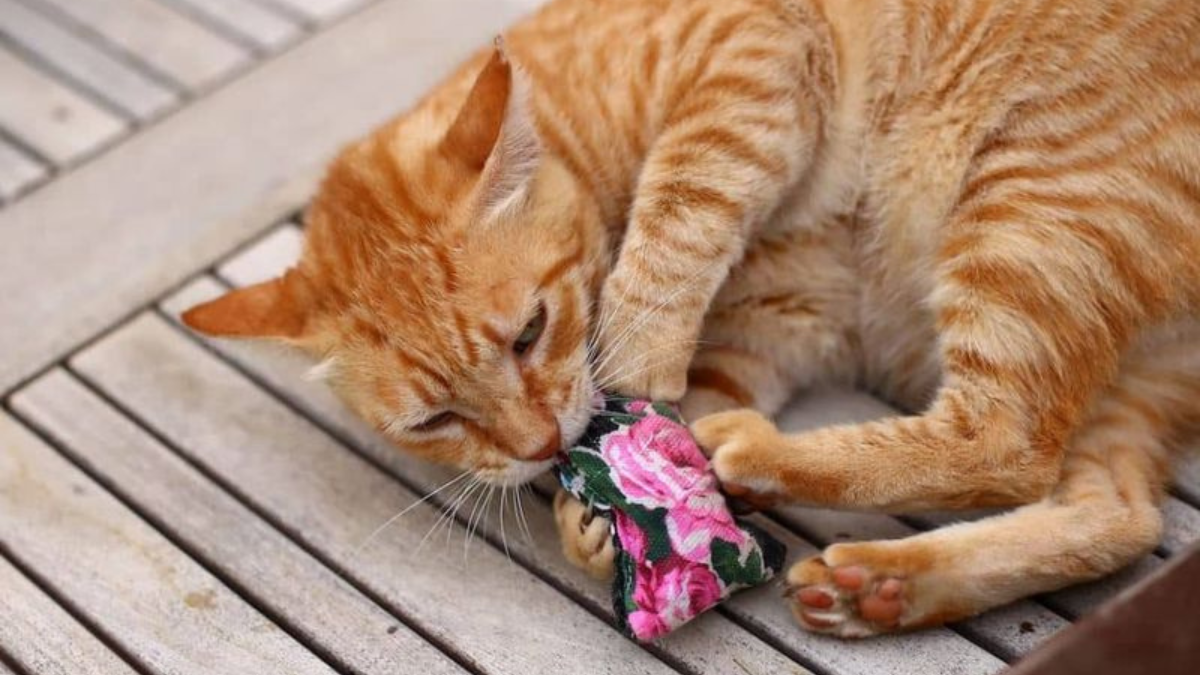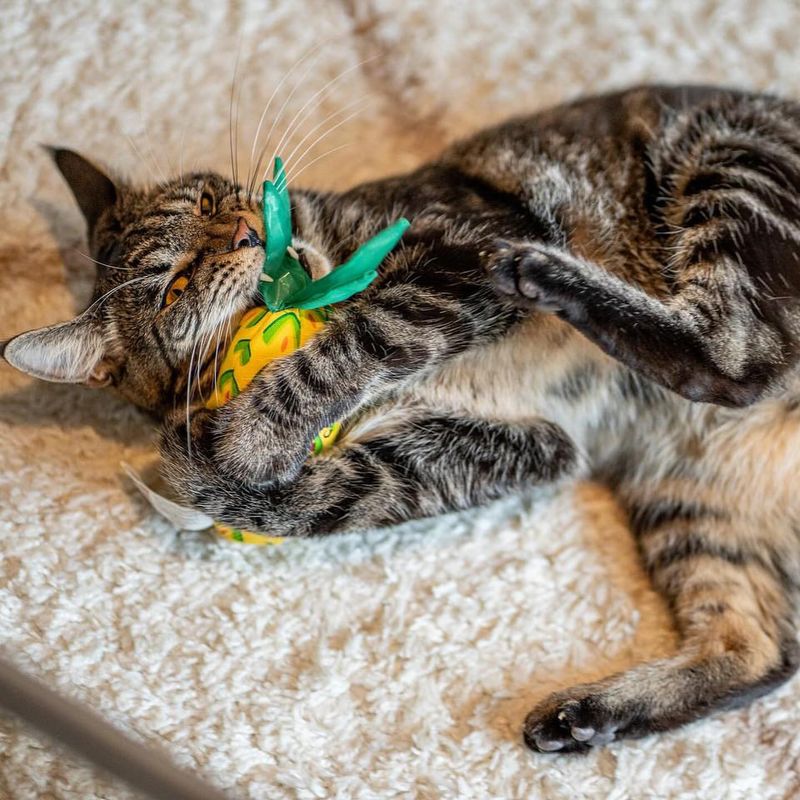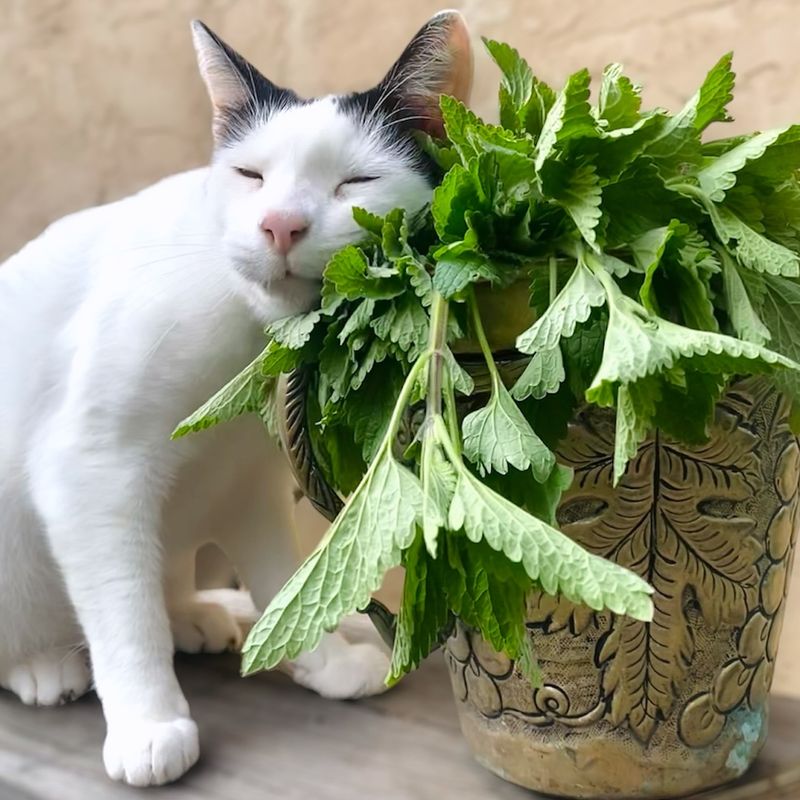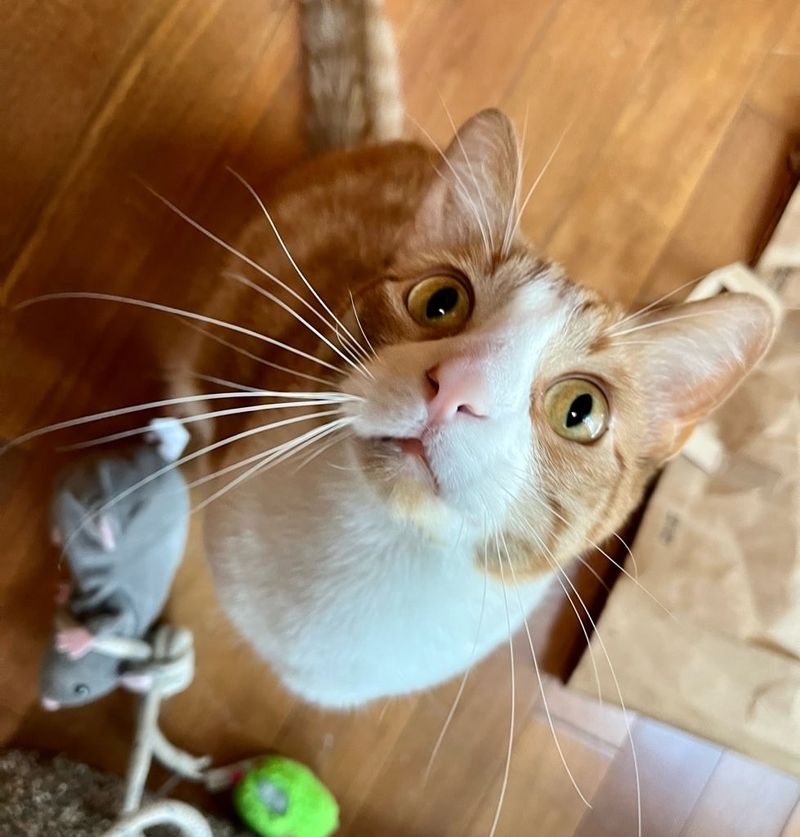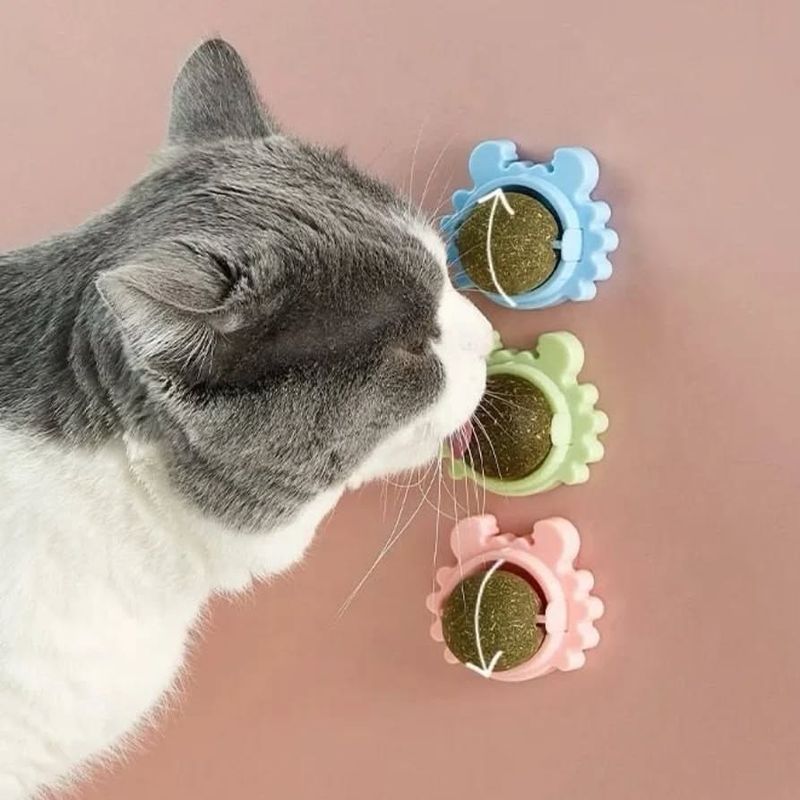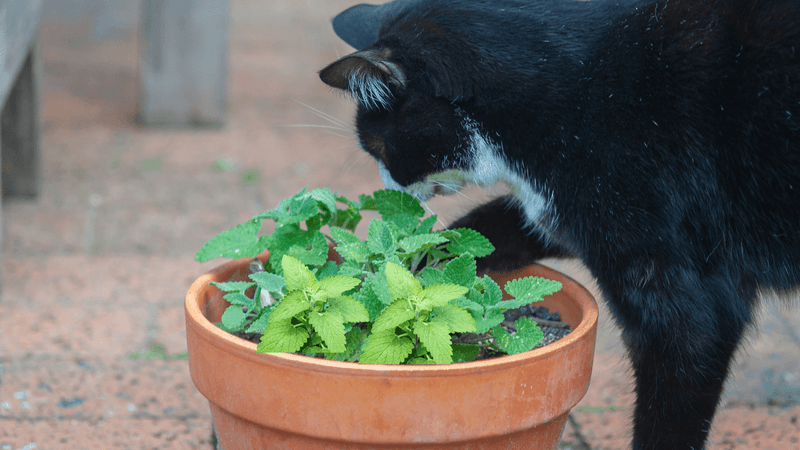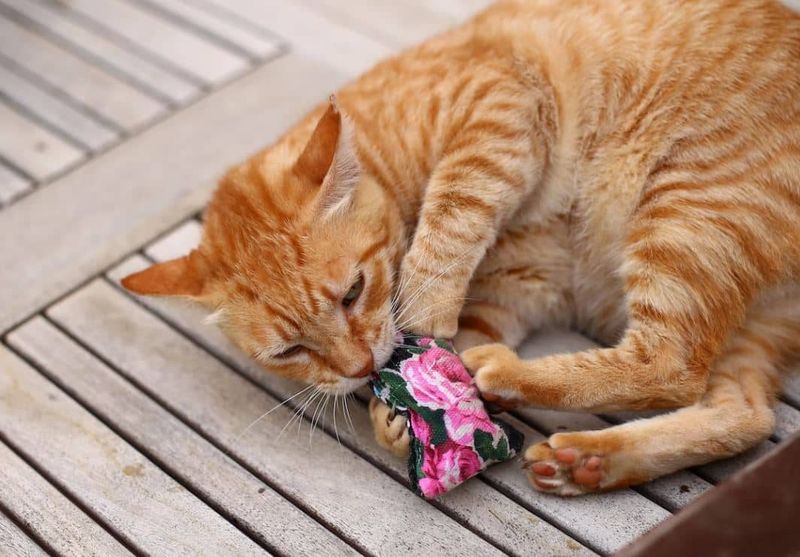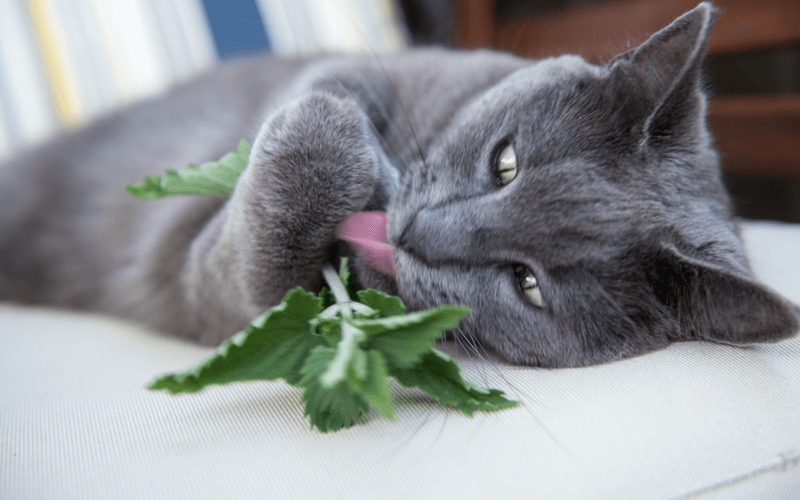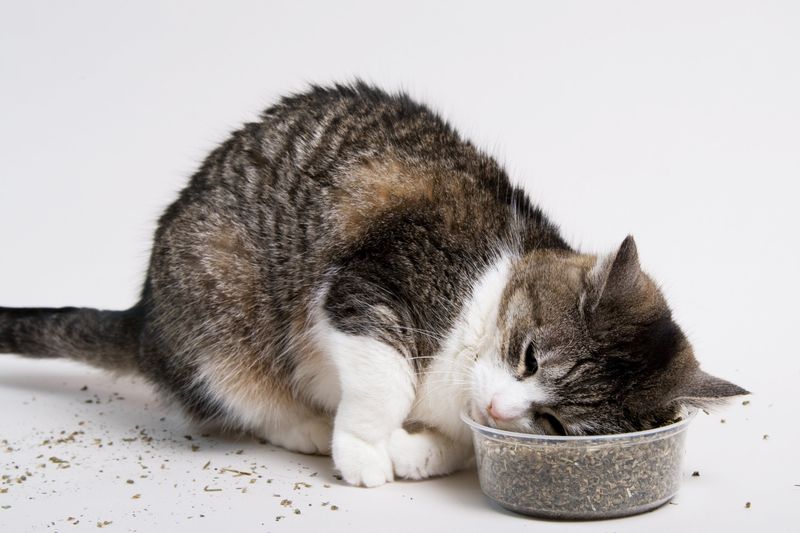📖 Table of Content:
- 1. Understand Catnip’s Effects
- 2. Check Your Cat’s Age
- 3. Consider Any Health Issues
- 4. Determine the Right Amount
- 5. Introduce Different Forms
- 6. Recognize Overstimulation Signs
- 7. Choose Safe Catnip Products
- 8. Watch for Allergic Reactions
- 9. Store Catnip Properly
- 10. Understand Catnip’s Temporary Effects
- 1. Don’t Force Catnip on Your Cat
- 2. Don’t Use Catnip as a Substitute for Playtime
- 3. Don’t Give Catnip Daily
- 4. Don’t Ignore Behavioral Changes After Use
Ah, catnip—the feline equivalent of a double-shot espresso mixed with a touch of magic. If you’ve ever seen a cat go absolutely bonkers over a sprig of this leafy wonder, you know just how mesmerizing (and, let’s be honest, hilarious) the transformation can be.
Rolling, purring, chasing invisible mice—it’s like a scene straight out of a kitty rave. But before you start sprinkling this green gold around like confetti, there are a few things you really need to know.
Turns out, catnip isn’t just a one-size-fits-all treat. From how it works to when to avoid it, this little herb has more layers than your cat’s obsession with your laptop keyboard.
So whether you’re a first-time catnip supplier or looking to up your feline enrichment game, this guide will help you navigate the world of Nepeta cataria like a pro.
1. Understand Catnip’s Effects
Catnip can have varying effects on cats. Some may become hyperactive, others may feel relaxed, and a few might not respond at all. This change in behavior is due to a chemical compound called nepetalactone. When cats sniff this compound, it binds to receptors inside their noses, stimulating sensory neurons.
It’s important to observe how your cat reacts initially. Introducing catnip for the first time should be a supervised experience, ensuring they don’t become overly aggressive or anxious.
If your cat enjoys catnip, you can use it as an occasional treat or a tool to encourage exercise and play. However, if your cat doesn’t respond, there’s no need to worry, as not all cats are affected by catnip. Knowing your cat’s unique reaction will help you decide how often to offer this treat.
2. Check Your Cat’s Age
Age plays a significant role in how a cat may respond to catnip. Kittens, until about the age of three to six months, typically do not react to catnip. This lack of response is normal, as the sensitivity to catnip develops as they grow.
For young kittens, it’s advisable to wait until they’re a bit older before introducing catnip. Once they’re past the six-month mark, you can offer a small amount and observe their reaction.
Adult cats generally show more pronounced effects. If your cat is older, you may notice a more intense response. Always tailor the amount of catnip to your cat’s personality and energy level. This ensures that young and mature cats can enjoy catnip at their own pace and comfort.
3. Consider Any Health Issues
Before giving your cat catnip, consider any underlying health issues they may have. Cats with anxiety, for instance, might react differently to the sudden stimulation catnip can provide.
Furthermore, if your cat has respiratory issues, ensure the environment is well-ventilated when offering catnip. This helps prevent any aggravation of their condition.
Consult your veterinarian if your cat has chronic illnesses or takes regular medication. They can provide advice on whether catnip is suitable for your pet. Understanding your cat’s health will help prevent any unwanted reactions and ensure a positive experience.
4. Determine the Right Amount
Finding the right amount of catnip to give your cat is crucial. Overdoing it can lead to overstimulation, while too little might not elicit any response. A small pinch is usually sufficient for most cats.
Start with a tiny amount and observe how your cat reacts. You can increase the quantity slightly if they seem to enjoy it, but moderation is key.
Giving catnip too often can lead to a diminished response over time, as cats may become desensitized. Limit exposure to once or twice a week to maintain its novelty and effectiveness. This balance keeps the experience enjoyable and prevents any potential negative effects from overexposure.
5. Introduce Different Forms
Catnip comes in several forms, each offering unique interactions. Dried leaves are the most common and can be sprinkled on toys or scratching posts. Fresh catnip plants are another option, providing a more natural experience.
Catnip toys and sprays can be excellent alternatives if you prefer less mess. These products offer the benefits of catnip without the loose leaves.
Experiment with different forms to find out which your cat likes best. Each form can offer a new way to engage and entertain your cat, keeping their environment stimulating. Offering variety ensures your cat enjoys different experiences and prevents boredom.
6. Recognize Overstimulation Signs
It’s essential to recognize signs of overstimulation when giving your cat catnip. Some cats may become too energetic, leading to aggression or erratic behavior.
Watch for signs such as dilated pupils, flattened ears, or a swishing tail. If your cat displays these behaviors, it’s time to remove the catnip and let them calm down.
Provide a quiet space for them to relax and ensure they have access to water. By being observant and responsive to your cat’s needs, you can prevent any negative experiences and maintain the positive effects of catnip.
7. Choose Safe Catnip Products
When choosing catnip products, prioritize safety and quality. Organic catnip is often a great choice, as it’s free from pesticides and chemicals that could harm your cat.
Always check the label for ingredients and ensure there are no additives. Some products may include fillers that reduce the purity of the catnip.
Additionally, select toys and products made from non-toxic materials. Your cat’s health and safety should always come first, making these considerations crucial. By choosing high-quality products, you can offer catnip confidently, knowing it won’t harm your pet.
8. Watch for Allergic Reactions
While rare, some cats may have allergic reactions to catnip. Symptoms can include sneezing, coughing, or skin irritation. If you notice these, it’s best to discontinue use and consult a veterinarian.
Monitor your cat closely the first few times they try catnip. Allergies may not present immediately, and ongoing observation is necessary.
If your cat does have an allergy, rest assured there are many other ways to entertain and stimulate them. Alternatives such as interactive toys or puzzle feeders can provide enrichment without causing discomfort. Understanding your cat’s unique needs ensures they remain happy and healthy.
9. Store Catnip Properly
Proper storage of catnip is essential to maintain its potency. Keep dried catnip in a sealed container, away from light and humidity. This preserves the aroma and effectiveness, providing a consistent experience for your cat.
Fresh catnip should be treated like any herb, kept in a cool place to prevent wilting. You can also grow your own catnip plant indoors, ensuring a continuous supply.
By storing the catnip correctly, you extend its shelf life and make it enjoyable for your cat. Well-preserved catnip offers a more robust response, maintaining the excitement each time.
10. Understand Catnip’s Temporary Effects
The effects of catnip are temporary, typically lasting about 10 to 15 minutes. After this period, your cat may lose interest and require a cooldown phase. During this time, they may act tired or indifferent.
This temporary nature is normal and part of the cycle of catnip’s influence. It’s important to allow your cat to rest and not reintroduce catnip immediately.
Understanding this cycle helps you manage play sessions effectively. By spacing out catnip exposure, you keep it a special treat that your cat can enjoy repeatedly without losing interest. Awareness of these temporary effects ensures a balanced and enjoyable experience.
1. Don’t Force Catnip on Your Cat
Some felines are simply indifferent to catnip. Imagine your cat strolling past a fragrant pile without a second glance. That’s perfectly normal!
Don’t try to force an interest in catnip if your pet shows no inclination. It’s a natural preference, much like a human’s taste for certain foods. Forcing it might lead to stress or confusion.
Instead, celebrate your cat’s unique personality and explore other toys or treats that capture their fancy. Every cat is different, and those differences make them special. Respecting their preferences fosters trust and a stronger bond.
2. Don’t Use Catnip as a Substitute for Playtime
Catnip can ignite bursts of energy, but it’s no substitute for interactive play. Imagine using a sprinkle of catnip and expecting it to replace the joy your cat finds in a game of chase with you.
Cats thrive on interaction and engagement. Relying solely on catnip might lead to boredom or even behavioral issues. Instead, prioritize regular playtime with toys that mimic hunting or play-fighting.
These activities are vital for your cat’s physical and mental health. Catnip can enhance play but shouldn’t replace those precious moments of bonding with your furry friend.
3. Don’t Give Catnip Daily
While catnip is enjoyable, moderation is key. Picture a calendar where catnip days are an exciting weekly event rather than a daily routine.
Overexposure might diminish the effect, making it less special and even dull over time. By limiting catnip to occasional treats, you preserve its magic. Your cat will look forward to those special days, creating a sense of anticipation.
Moderation ensures that catnip remains a delightful surprise, rather than an everyday expectation. This approach fosters variety and keeps your cat’s environment stimulating and engaging.
4. Don’t Ignore Behavioral Changes After Use
Catnip reactions can vary, and it’s crucial to pay attention. Imagine your cat showing unexpected lethargy or aggression after exposure. These changes can indicate that catnip isn’t suitable for them.
Monitoring these shifts helps in understanding what’s normal and what requires attention. If something seems off, consider limiting or eliminating catnip from their routine.
It’s all about tuning into your cat’s needs and ensuring their well-being. Being observant and responsive to these changes helps maintain a harmonious and happy household, fostering a loving and safe environment for your pet.
